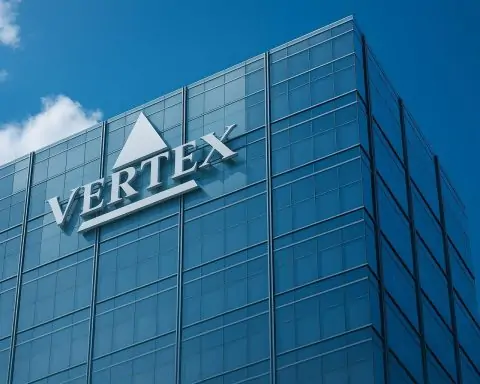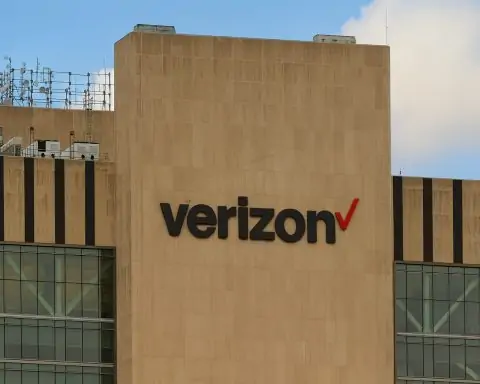New York, November 17, 2025 – The US stock market started the new week on an uncertain footing as investors braced for a packed few days of economic data and blockbuster earnings led by Nvidia, while a rare tech bet from Warren Buffett sent Alphabet shares to record highs.
By late morning in New York, the Dow Jones Industrial Average was down about 0.2% near 47,100, the S&P 500 slipped around 0.1% to about 6,726, and the Nasdaq Composite hovered close to flat near 22,890, reflecting a choppy, directionless session. [1]
That muted tone comes after a volatile prior week in which the Dow and S&P 500 eked out modest gains while the Nasdaq posted a second straight weekly decline, pressured by profit‑taking in big technology and AI names. [2]
Major US Indexes Edge Lower as Big Week Begins
The mood on Wall Street could be summed up as “cautious but not panicked.”
Early in the session, the main indexes briefly traded in positive territory – the Dow and S&P 500 were up less than 0.1% and the Nasdaq gained about 0.3% near the open – before drifting modestly into the red as traders stepped back from making big bets. [3]
By late morning:
- Dow Jones Industrial Average: down roughly 0.2%, around 47,057
- S&P 500: down about 0.1–0.2%, around 6,725–6,723
- Nasdaq Composite: near unchanged to slightly lower, around 22,891 [4]
The intraday pattern has been classic “wait-and-see”: early attempts to rally faded, but selling pressure has also been limited as investors look ahead to this week’s catalysts rather than reacting to any single headline. A Bloomberg/Swissinfo markets wrap noted that the S&P 500 is on track to break a six‑month winning streak unless confidence in AI and interest‑rate cuts is restored later in the week. [5]
Nvidia Earnings: The AI Bellwether in the Spotlight
The biggest single overhang on US stocks today is Nvidia’s upcoming earnings report, due after Wednesday’s closing bell.
Nvidia – now the world’s most valuable public company – has been the face of the AI boom, and its results are widely seen as a referendum on whether massive AI spending can continue at its current pace. [6]
Key points around Nvidia today:
- The stock traded roughly 1–2% lower during Monday’s session, extending a recent pullback in AI names. [7]
- Options activity implies a potential 6% move in either direction on earnings, according to traders cited by Reuters, underscoring how pivotal the report has become for the broader market. [8]
- A regulatory filing showed Peter Thiel’s hedge fund, Thiel Macro, fully exited a $100 million Nvidia position in the third quarter, feeding concerns that some early believers in the AI trade are taking chips off the table. [9]
Analysts worry that even a strong print could paradoxically fuel more volatility. With Nvidia’s CEO Jensen Huang previously highlighting as much as $500 billion in expected chip orders for 2025–26, investors fear that “limitless” AI budgets may be bumping up against valuation and financing realities. [10]
If Wednesday’s earnings fail to reassure markets, some strategists warn that further weakness in AI leaders could spill over into the broader S&P 500 given how heavily the index is concentrated in mega‑cap tech. [11]
Buffett’s Big Bet Sends Alphabet to Record Highs
One of the most eye‑catching moves of the day came from Alphabet, whose shares surged nearly 6% to a record high after Berkshire Hathaway disclosed a new multi‑billion‑dollar stake. [12]
Regulatory filings show that Berkshire bought roughly 17.8 million Alphabet shares, a position worth close to $4.9 billion based on Friday’s closing price. [13]
Why it matters:
- Berkshire, traditionally wary of high‑growth tech, is making a rare wager on a major AI platform, effectively endorsing Alphabet’s AI strategy in search, cloud and advertising. [14]
- Alphabet has gained about 46% year‑to‑date, making it the best‑performing member of the so‑called “Magnificent Seven” this year. [15]
- The company still trades at a lower earnings multiple than some peers like Microsoft and Nvidia, which some analysts say fits more neatly with Berkshire’s value‑oriented philosophy. [16]
Buffett’s move also came alongside further trimming of Berkshire’s large Apple stake and positions in some financials, a fact that investors read both as a vote of confidence in Alphabet and a sign of ongoing caution about stretched valuations elsewhere in tech. [17]
Alphabet’s strength helped limit the downside for the broader Nasdaq even as other big AI and semiconductor names slipped. [18]
Fed Caution and the Return of US Economic Data
The macro backdrop for the US stock market today is dominated by two intertwined themes: the resumption of official economic data after a record government shutdown and fresh messaging from the Federal Reserve.
The United States recently emerged from the longest government shutdown in its history, which had delayed key reports from agencies including the Labor Department and Commerce Department. [19]
As Washington reopens, a backlog of data is set to hit markets in rapid succession, including:
- September non‑farm payrolls, due later this week and expected to confirm a cooling labor market. [20]
- Delayed reports on factory orders, trade and other August data, which will help investors refine their view of growth and inflation heading into year‑end. [21]
Fed Vice Chair Philip Jefferson added to the cautious tone, saying the central bank needs to “proceed slowly” with any further rate cuts as policy moves toward a neutral setting that neither restrains nor stimulates the economy. [22]
Jefferson characterized the labor market as “sluggish,” noting that companies are reluctant to hire aggressively amid uncertainty over AI’s impact on staffing needs and broader policy shifts. The lack of official data during the shutdown has made it harder for policymakers to gauge the true state of the economy. [23]
In rate markets, futures tied to the federal funds rate now imply roughly 55–60% odds that the Fed will leave rates unchanged in December, versus near‑certainty of a quarter‑point cut that was priced in a month ago. [24]
That repricing helps explain why stocks, especially long‑duration growth names, have struggled to extend their earlier rallies despite the prospect of easier policy in 2026. [25]
Cross‑Asset Signals: Yields, Dollar, Bitcoin and Commodities
Monday’s session also delivered important signals from bonds, currencies and crypto that help frame US equity market sentiment:
- US Treasuries: The yield on the benchmark 10‑year note slipped to roughly 4.13–4.14%, down about a basis point from Friday, as investors tentatively moved back into government debt. [26]
- US dollar: The dollar index edged up around 0.2% to the high‑99s, with the euro trading near $1.16 and the yen around ¥155 per dollar, reflecting modest demand for safety. [27]
- Bitcoin: After plunging from an October record above $126,000 to test the $93,000–94,000 area, Bitcoin ticked about 0.5% higher today – a fragile rebound that still leaves the token deep in correction territory and signals a wider cooling in speculative risk appetite. [28]
- Gold & oil: Gold futures traded around $4,065–4,075 per ounce, down roughly 0.5%, while WTI crude oil hovered just below $60 per barrel, both showing mild pressure as the stronger dollar offset safe‑haven flows. [29]
Together, those moves reflect a market that is cautious rather than panicked: investors are trimming risk exposure, but not fleeing into full‑blown defensive mode.
Sector Movers: AI Hardware, Biotech, Lithium and Airlines
Beneath the index‑level churn, sector stories provided more color on how investors are positioning into year‑end.
1. AI Hardware Under Pressure
While Alphabet rallied, hardware and server‑linked AI plays came under pressure:
- Dell Technologies dropped roughly 5–6.5% after Morgan Stanley double‑downgraded the stock to “underweight,” warning about risks from an AI hardware “supercycle” that could compress margins. [30]
- Hewlett Packard Enterprise (HPE) fell around 4–5.5% on a similar downgrade, adding to the uneasy mood around companies supplying the physical infrastructure behind AI data centers. [31]
These moves echo a broader concern that soaring capital expenditures on AI may not translate into equally impressive long‑term returns for every part of the supply chain. [32]
2. Biotech Stocks Surge on Cancer‑Drug Breakthrough
At the other end of the spectrum, biotech names exploded higher:
- Zymeworks shares surged more than 30%.
- Jazz Pharmaceuticals jumped over 15–20%.
Both moves followed strong Phase 3 trial results for a jointly developed cancer therapy, which showed highly significant benefits in progression‑free survival for certain gastrointestinal cancers. [33]
The rally underscores how, even in a macro‑driven market, company‑specific breakthroughs can still deliver outsized gains.
3. Lithium Names Jump on EV Demand Hopes
Lithium producers and explorers were another bright spot:
- Sigma Lithium soared more than 25%.
- Albemarle climbed roughly 4%.
- Lithium Argentina and Lithium Americas gained about 8% and 3%, respectively. [34]
The catalyst was a forecast from Ganfeng’s chairman projecting 30% lithium demand growth by 2026, which reignited enthusiasm around the longer‑term electric‑vehicle and energy‑storage story after a period of price weakness. [35]
4. Airlines and Retail Under Pressure
More cyclical pockets of the market were weaker:
- A 1.6% drop in an airline index highlighted selling in major US carriers as investors fretted about the combined impact of higher energy costs, softening demand and lingering operational uncertainty even after the FAA lifted shutdown‑related flight restrictions. [36]
- Retail stocks traded mixed to lower ahead of earnings from Home Depot, Target and Walmart, which are expected to offer fresh insight into the strength of US consumer spending after weeks of incomplete economic data. [37]
Morgan Stanley’s Bullish 2026 Call: A Longer‑Term Counterweight
While Monday’s tape looked hesitant, strategists at Morgan Stanley struck a notably upbeat tone on the medium‑term outlook for US equities.
In a set of global outlook reports published today, the bank:
- Raised its 2026 year‑end target for the S&P 500 to 7,800, implying around 16% upside from current levels.
- Argued that “risk assets are primed for a strong 2026”, powered by AI‑driven capital expenditures, solid earnings growth and a “favorable policy backdrop.”
- Predicted that US stocks will outperform global peers, with small caps and cyclical sectors leading as the Fed’s earlier rate cuts work their way through the economy. [38]
The call offers a counterweight to near‑term jitters. Even as traders fret about Nvidia’s next move and the timing of the Fed’s third rate cut of 2025, major Wall Street houses are increasingly framing any pullbacks as part of a volatile but ultimately constructive path into 2026. [39]
What Today’s Session Means for Investors
For investors following the US stock market on November 17, 2025, today’s trading can be read less as a decisive turning point and more as a pause before impact:
- Macro clarity is coming – A wave of delayed US data, including the September jobs report, will give markets better visibility on growth, inflation and the Fed’s December decision. [40]
- The AI trade is at an inflection point – Nvidia’s earnings could either revive enthusiasm for AI‑linked growth stocks or deepen skepticism about an “AI bubble,” with implications for the entire market given tech’s outsized weight. [41]
- Stock picking still matters – Today’s split between soaring biotech and lithium names on one hand, and pressured AI hardware and airline stocks on the other, highlights the value of focusing on company‑ and sector‑specific fundamentals rather than only index‑level trends. [42]
- Policy remains a swing factor – With Fed officials sending a “go slow” message on further cuts and the market now assigning only coin‑flip odds to a December move, interest‑rate expectations will remain a key driver of valuations, particularly in growth sectors. [43]
For now, Wall Street is wobbling rather than breaking – and the next decisive push will likely come not from Monday’s drift, but from the numbers and earnings that hit later this week.
References
1. www.reuters.com, 2. finviz.com, 3. www.reuters.com, 4. www.reuters.com, 5. www.swissinfo.ch, 6. www.swissinfo.ch, 7. www.reuters.com, 8. www.reuters.com, 9. m.economictimes.com, 10. m.economictimes.com, 11. www.swissinfo.ch, 12. www.reuters.com, 13. www.reuters.com, 14. www.reuters.com, 15. www.reuters.com, 16. www.reuters.com, 17. www.reuters.com, 18. www.reuters.com, 19. www.reuters.com, 20. www.reuters.com, 21. www.nasdaq.com, 22. www.reuters.com, 23. www.reuters.com, 24. www.reuters.com, 25. www.swissinfo.ch, 26. www.swissinfo.ch, 27. www.swissinfo.ch, 28. www.swissinfo.ch, 29. www.swissinfo.ch, 30. www.reuters.com, 31. www.reuters.com, 32. www.swissinfo.ch, 33. www.investopedia.com, 34. m.economictimes.com, 35. m.economictimes.com, 36. www.nasdaq.com, 37. www.reuters.com, 38. www.reuters.com, 39. www.reuters.com, 40. www.reuters.com, 41. www.swissinfo.ch, 42. m.economictimes.com, 43. www.reuters.com







